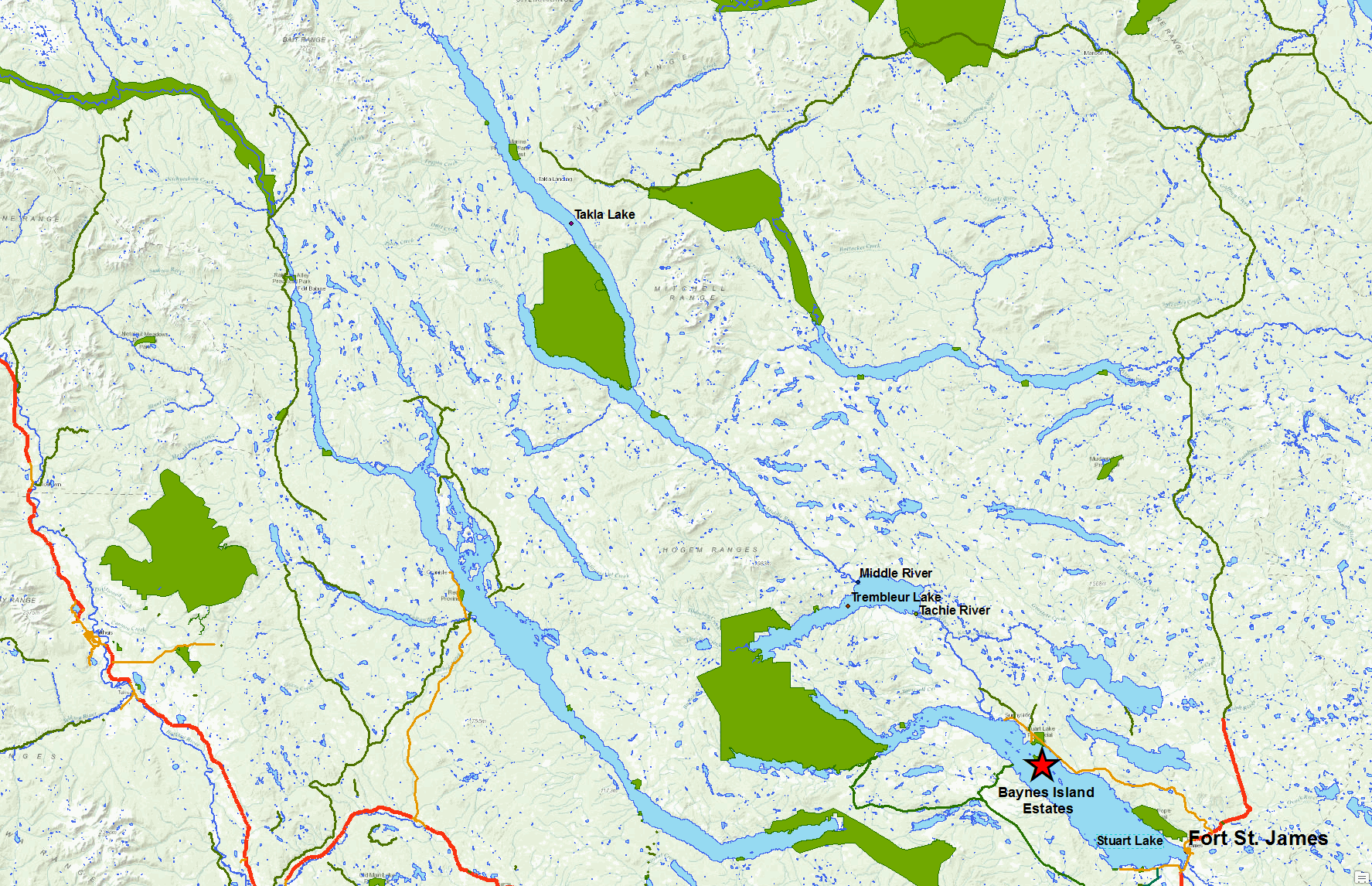
History
Stuart Lake ,Tachie River ,Trembleur Lake, Middle River, and Takla Lake have historically served as the major water transportation system supporting First Nations communities, industrial forestry development, sustenance fishing, recreational fishing, and hunting in the region.
Carbon dating from an indigenous site near Prince George shows that people have lived in central British Columbia for 10,000 years.
“Dakelh” (Carrier) describes an indigenous people who share closely related dialects or languages.
They live in an area in central British Columbia between the Rocky Mountains in the east the Omineca mountains in the north and the Hazleton Mountains in the west.

They used water ways as sources of food and for travel. An early 19th century European explorer based in Montreal noted they traveled in dug out cottonwood canoes and were the most able canoeists he had encountered on his continent wide travels.


In 1806 Simon Fraser, a partner and explorer for the North West Company while searching for a route through the Dakelh area to the Pacific Ocean founded Fort St. James at the east end of Nak-albun (Stuart) Lake.
It served as headquarters for an area given the name of New Caledonia by Fraser. In 1821 the North West Company merged with the Hudson Bay Company. Fort St. James is the oldest continuously inhabited non-indigenous community in British Columbia.
In the early and mid 19th century it was the administrative center for New Caledonia . The remaining buildings of the trading post are the largest collection of wood buildings of the fur trade era in Canada. It is a national historic site and Parks Canada maintains and operates it, hosting many tourists during the summer months.
Dakelh ,( we travel by water) indigenous people assert they have inhabited since time immemorial an area in central British Columbia.
The water ways they traveled and continue to live on include the Fraser River, Nechako River , Nautley River, Fraser Lake , Stuart River , Stuart Lake, Tache River, Trembleur Lake, Middle River and Takla Lake.
There are many other bodies of water they live and traveled on. The named bodies of water form a system of waterways which were navigated by steam driven paddle wheel river boats in the last part of the 19th century and early part of the 20th century.



The paddle wheelers maximum area of travel southerly limit was Soda Creek (on the Fraser River 40km north of Williams Lake), the easterly limit was Tete Jaune Cache. ( on the Fraser River 20km northwest of Valemount ) the westerly limit was Fraser Lake and northerly limit was Takla Lake.
The paddlewheelers provided support for the Omineca gold fields, Land Survey crews, trading posts, settlers and railway construction. Strung out in a line this is approximately 800 km of waterway and thousands of kilometres of shoreline.
It was only navigable for the stern wheelers at specific times of the year. Some of the water was very difficult to navigate and the northerly and westerly limits were only accessed by a trip or two. The sternwheeler the Enterprise was abandoned at the west end of Trembleur Lake in 1871.
For much of the 20th century Stuart Lake ,Tachie River ,Trembleur Lake, Middle River, and Takla Lake served as a water transportation system supporting many First Nations communities, industrial forestry development, as well as , sustenance fishing, recreational fishing, commercial sport fishing and hunting.
For many of the First Nations communities’ access was by air or water only.

Gradually logging roads were developed and extended to provide access to the first Nations communities until by the end of the 20th century all the main ones were served by road.
Doug Hoy operated the last barge service providing transportation and fuel delivery throughout the system until early in the 21st century.
One of finest fishing resorts in the region was the Douglas Lodge located near Ft. St. James. It was built in the 1920’s by Edgar Baynes.
Edgar, an Englishman, also built and owned the fine Grosvenor Hotel in Vancouver. The luxuriously appointed trophy fishing Lodge hosted many famous guests including a United States President.

The Baynes family bought Baynes Island from the crown in the 1920s as thier personal retreat and continued to own and recreate on the island until 2014 when the current owners bought and created the lots being offered for sale.
